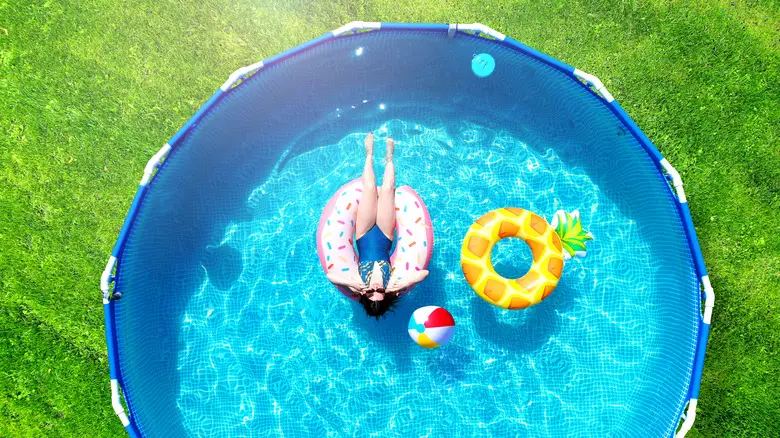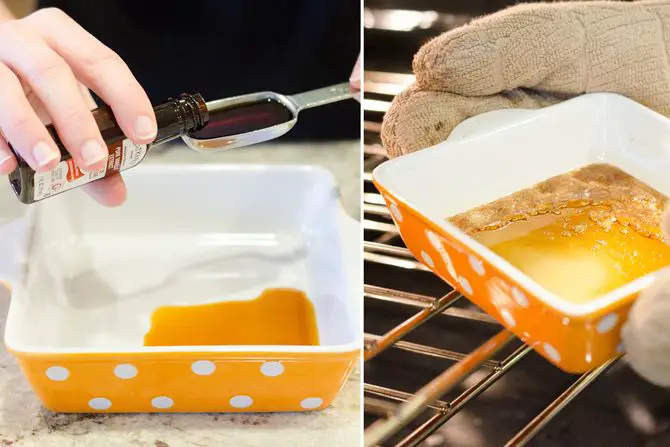Baking soda, also known as sodium bicarbonate, has been used for decades as a common household substance to enhance cleaning and cooking. It is also widely used by pool owners to maintain healthy pH levels in their pools.
The question that many people ask is whether it is safe to swim immediately after adding baking soda to your pool. In this article, we will explore the science behind baking soda and its effect on the pool water. We will also outline some best practices for using baking soda safely in your pool.
What is Baking Soda and How Does it Affect the Pool Water?
Baking soda is a chemical compound that contains carbon, hydrogen, and oxygen molecules. When added to the pool water, it works as a buffering agent that regulates the pH balance of the water.
pH is an essential parameter of pool chemistry that measures how acidic or alkaline the water is. The optimal range for pH in a swimming pool typically falls between 7.2 and 7.8. If the pH level becomes too high or too low, various problems can arise such as skin irritation, corrosion of pool equipment or even bacterial growth.
When you add baking soda to your pool water, it helps raise the alkalinity level of the water which means that it’s less likely for pH swings to occur. By maintaining an optimal pH range consistently, your swimming experience will be more enjoyable while protecting your pool infrastructure from wear and tear over time.
Is It Safe to Swim Immediately After Adding Baking Soda to Your Pool?
One common misconception about adding baking soda to a swimming pool is that people who swim in it shortly after could be ingesting unsafe chemicals affecting their health negatively. However, there are no immediate health hazards related to swimming right after adding baking soda into a swimming pool.
It’s crucial to note that baking soda used in pools is food-grade quality material generally recognized as safe by operations regulating food benefits. Also, baking soda is not typically toxic unless in high levels like every other chemical used in swimming pools, such as Chlorine.
That being said, you don’t necessarily have to hop into the water after adding baking soda to your pool. It’s safe to wait for about 20 minutes before diving in just to ensure that the chemicals have dispersed evenly around the pool water and achieved optimal balance.
What Are The Possible Risks Of Swimming After Adding Baking Soda To Your Pool?
It is essential to use baking soda on the pool water wisely as improper handling could lead to short and long-term risks that negatively impact aquatic life, equipment infrastructure, and your health. Some of these possible challenges are outlined below:
Short-Term Effects on Human Health
While baking soda itself doesn’t pose a danger to humans or other living organisms in small doses, it can still irritate your skin if the pH level drops significantly too fast. Baking soda should be added gradually so that it maintains a steady change that does not affect human exposure.
Regardless of whether you choose to swim immediately after adding baking soda, always make sure to wait until all the particles have dissolved completely before going into the water.
Long-Term Effects on Pool Equipment and Infrastructure
When optimal levels of pH are not maintained consistently over time due to an excessive slash at once resulting from adding too much baking soda instead of gradual additions will result in serious damages. It causes corrosion and scaling issues across swimming pool plumbing systems and surfaces such as metal rails, plastered walls & floors reducing its lifespan ultimately while affecting safety.
Negative Impact on Overall Quality and Clarity of Pool Water
Adding too much or poorly making adjustments with baking soda would reduce chlorine’s efficacy against microbes which leaves pool waters open to pathogens such as Escherichia coli or Legionella resulting in infection during swimming visits causing public health concerns ultimately leading up legal issues for business owners.
Best Practices for Using Baking Soda in Pools
To keep your pool water safe and healthy, consider following these best practices for using baking soda in pools:
Instructions for Using Baking Soda in a Pool Safely
- Start by testing the pH level of your pool before adding baking soda. The optimal range should be between 7.2 and 7.8.
- Measure the amount of baking soda needed to achieve optimal levels according to pool size, ensuring you don’t add too much or too little.
- Add the baking soda gradually as you stir the water around the edge until it eventually settles evenly
- Continue testing pH levels frequently to ensure that they remain consistent over time.
Recommended Waiting Time Before Swimming from Different Manufacturers
Different manufacturers offer varying recommendations on how long one should wait before swimming after adding baking soda to a pool. However, it’s advisable to observe at least 20 minutes before swimming in any case. It’s essential always to follow manufacturer instructions on chemical usage and handling as they will give you more accurate waiting times.
Importance of Regularly Testing And Monitoring Chemical Levels In Pools
Ensure regular monitoring of ph levels after adding any chemical agents into the swimming pool water at intervals using test strips available at local stores is critical for efficiency alongside safety reasons. While people often neglect consistent testing because higher frequency increases maintenance time, leads higher expenses and most importantly possess risks pointed out earlier health & aquatic balance wise.
Conclusion
In conclusion, swimming right after adding baking soda is generally safe if proper procedure and precautions are taken into consideration during use while avoiding reckless behavior or decision-making can pose short-term and long-term consequences facing different aspects related to swimming Pools.
It’s crucial always to take care of yourself while keeping regulations in mind such as optimal chemicals doses, PH balance & worker certifications when necessary ultimately enhancing enjoyment while staying safe during those hot summer days alongside providing lasting memories with friends & family.
Q&A
- Q: Can adding baking soda to a pool affect my swimming performance? A: No, the addition of baking soda will not have any effect on your swimming performance.
- Q: Will adding baking soda change the color or pH levels of the water in the pool? A: Yes, adding baking soda will raise the pH levels of the water, but it should not drastically change the color.
- Q: How much baking soda should I add to my pool? A: The amount of baking soda added to a pool depends on the size of the pool. Generally, one pound of baking soda per every 10,000 gallons of water is recommended.
- Q: Can adding too much baking soda harm swimmers or damage equipment? A: Adding too much baking soda can potentially harm swimmers and damage equipment due to imbalanced pH levels. It is important to only add the recommended amount and regularly test pH levels to maintain proper balance.





